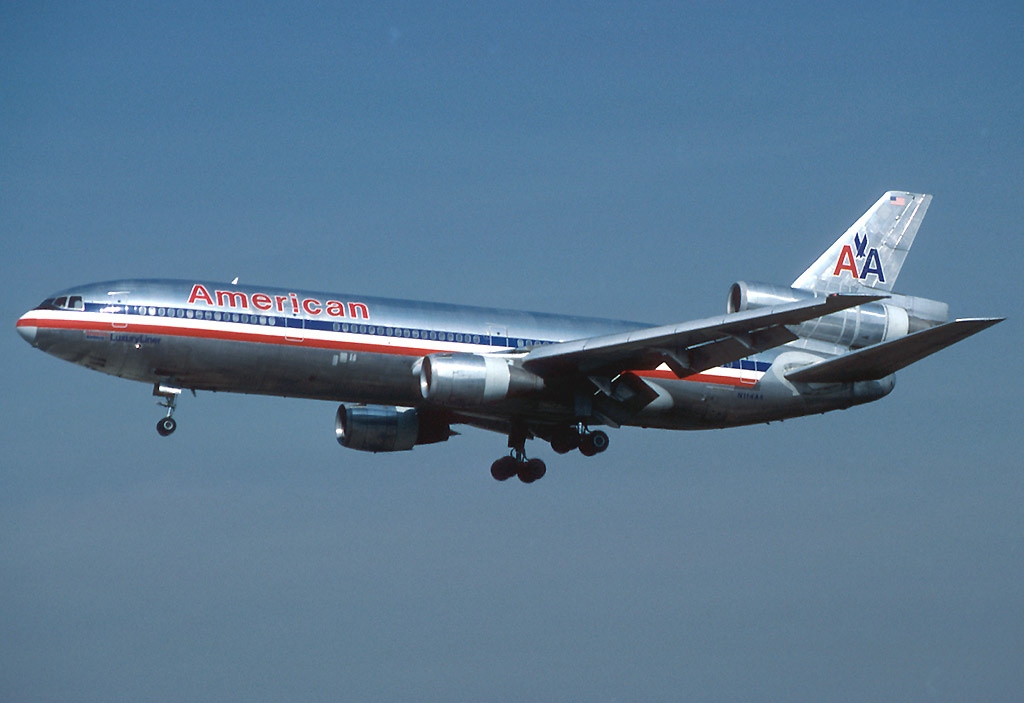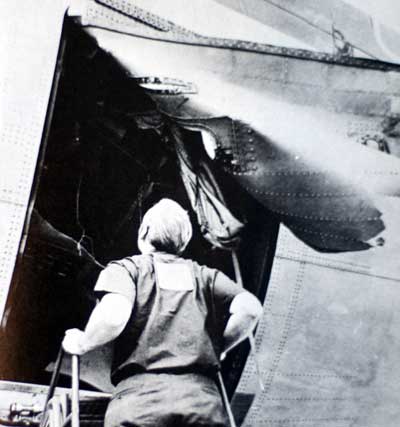12 June 1972 - American Airlines 96
Flight 96 was a regularly scheduled flight from Los Angeles International Airport to LaGuardia Airport with intermediate stops at Detroit Metropolitan Wayne County Airport and Buffalo Niagara International Airport. On June 12, it was being flown by a DC-10-10, registration N103AA, with a flight crew consisting of Captain Bryce McCormick (age 52); First Officer Peter "Page" Whitney (34); and Flight Engineer Clayton Burke (50). McCormick was a highly experienced pilot, having amassed more than 24,000 flight hours throughout his flying career. Whitney and Burke were also seasoned airmen with approximately 7,900 flight hours and 13,900 flight hours, respectively, under their belts.

The flight left Los Angeles 46 minutes after its scheduled 1:30 pm departure due to passenger loading and traffic and arrived in Detroit at 6:36 pm. In Detroit, the majority of the passengers disembarked, and the plane took on new passengers and cargo. Leaving Detroit, the aircraft had 56 passengers and 11 crew. The plane departed at 7:20 pm, climbing to 6,000 for a hold, before capturing V-554 (a victor airway) and climbing to Flight Level 210 (21,000 ft).
At 7:25 pm, while climbing through 11,750 ft, at 260 knots, the crew heard a distinct "thud" and dirt in the cockpit flew up into their faces. The "thud" was the sound of the rearmost cargo door breaking off, causing a sudden decompression that also caused part of the floor at the rear of the cabin to partially give way. Captain McCormick momentarily believed they had suffered a mid-air collision and the cockpit windows had been smashed. At the same time, the rudder pedals moved to their full-right position and the engine controls moved to idle. McCormick immediately took manual control of the aircraft and attempted to re-apply power, finding that engines 1 and 3 would respond normally, but engine 2, in the tail, would not allow its controls to be moved, as control cables had been severed when the floor gave way. McCormick managed to level off and stabilize the speed at 250 knots, although at this speed control was very sluggish. They declared an emergency and requested routing back to Detroit.
In the cabin, the flight attendants saw a "fog" form within the cabin and immediately recognized it as a depressurization. Two crews were in the rear lounge area, and the floor under their feet partially collapsed into the cargo hold, giving them both minor injuries. In spite of this, the cabin crew immediately attempted to ensure the oxygen masks had deployed properly, but having occurred below the 14,000 ft limit, the masks had not deployed. One of the attendants obtained a walk-around oxygen bottle and called the cockpit on the intercom to inform them that the damage was in the rear of the aircraft. On instructions from the cockpit, the attendants instructed the passengers on emergency landing procedures. A number of passengers later reported that the aircraft safety cards proved useful in locating the nearest exit. A casket with the body of a woman who had died out of state fell from the cargo hold to the ground near Windsor, Canada.
The aircraft returned to Detroit, but, when the crew set the flaps to 35 degrees for landing, the aircraft stabilized in a 1,900 ft/min descent rate that was far too fast for landing. By applying power to the No. 1 and No. 3 Engines, McCormick managed to level off the nose and reduce the descent rate to 700 ft/min. At 7:44 pm, the aircraft touched down 600 m (1,900 ft) down runway 03R, immediately veering to the right and eventually leaving the runway surface. First Officer Whitney applied full reverse thrust to the left engine and idled the right, straightening the aircraft's path, and eventually starting to bring the aircraft back to the runway. The aircraft stopped 270 m (880 ft) from the end of the runway, with the nose and left gear on the runway and the right on the grass beside it. It happened that while training to convert his expertise to flying the DC-10, McCormick had practiced, in a simulator, controlling the plane with the throttles in this fashion, in the worst-case scenario of a hydraulic failure. A similar technique was used on another DC-10 in 1989 following a complete loss of hydraulic pressure on United Airlines Flight 232.

The cause was traced to the cargo door latching system, which had failed to close and latch the door completely without any indication to the crew that it was not safely closed. A separate locking system was supposed to ensure this could not happen but proved to be inadequate. McDonnell Douglas instituted a number of minor changes to the system in an attempt to avoid a repeat. These were unsuccessful, however; on March 3, 1974, the rear cargo door of Turkish Airlines Flight 981 experienced the same failure and blew open, causing the aircraft to lose all control and crash in a forest near Paris, France. This crash killed all 346 people on board, making it the deadliest in aviation history until the 1977 Tenerife airport disaster and the deadliest single-aircraft crash until the 1985 crash of Japan Airlines Flight 123.
Download the full NTSB report (CVR transcript starts on page 22)
